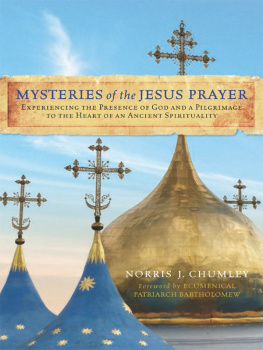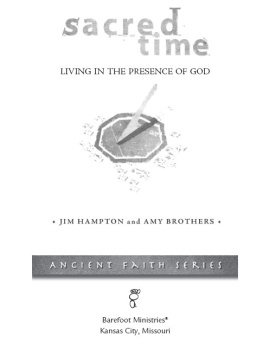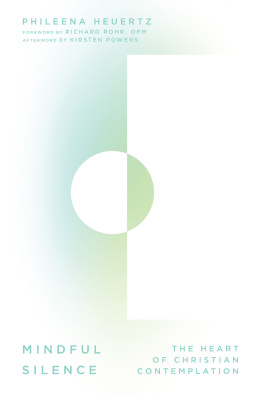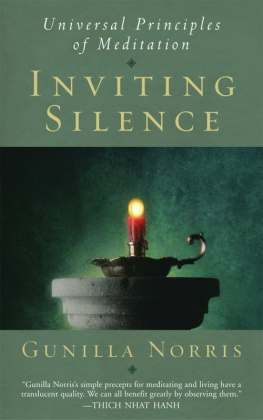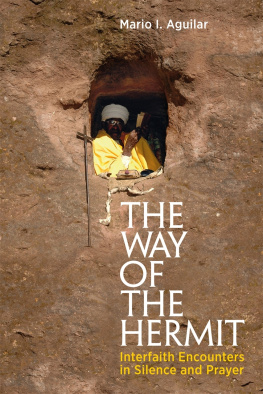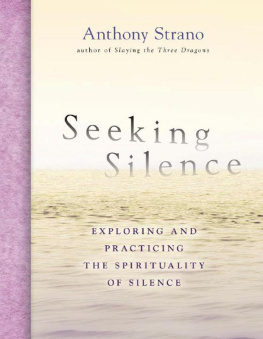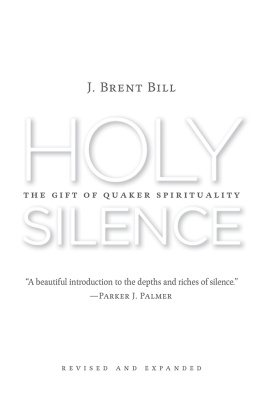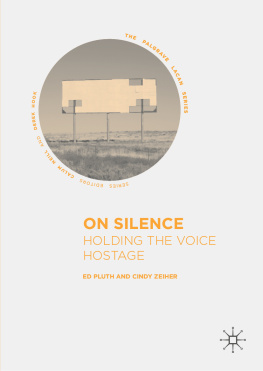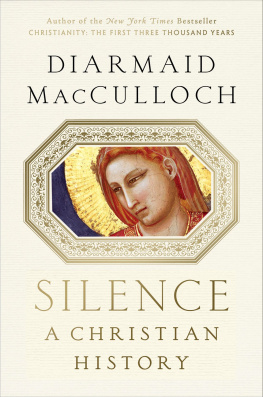Be Still and Know
God's Presence in Silence
Norris J. Chumley
Fortress Press
Minneapolis
BE STILL AND KNOW
Gods Presence in Silence
Copyright 2014 Norris J. Chumley, PhD. All rights reserved. Except for brief quotations in critical articles or reviews, no part of this book may be reproduced in any manner without prior written permission from the publisher. Visit http://www.augsburgfortress.org/copyrights/ or write to Permissions, Augsburg Fortress, Box 1209, Minneapolis, MN 55440.
Cover image Norris J. Chumley
Cover design: Tory Herman
Library of Congress Cataloging-in-Publication Data
Print ISBN: 978-1-4514-7051-2
eBook ISBN: 978-1-4514-7991-1
The paper used in this publication meets the minimum requirements of American National Standard for Information Sciences Permanence of Paper for Printed Library Materials, ANSI Z329.48-1984.
Manufactured in the U.S.A.
This book was produced using PressBooks.com.
Contents
This book is dedicated to God the Father, the Son, Jesus Christ, and the Holy Spirit. Thank you for my life and the ability to do your will.
I would like to thank my ancestors and family, my wife, Catherine Stine Chumley, sons Jack Hudson Morris Chumley and Nathaniel Buskirk Chumley, my sister, Ellen White Chumley, my brothers, Hays Hardesty Chumley and the late Gary Buskirk Chumley, and sister-in-law, Beth Baxter, brother-in-law, John Bower Stine III, and sister-in-law, Karen Heath Stine. I would also like to thank my father-in-law, the late Richard Dengler Stine, and mother-in-law, Dorothy Cornog Stine.
My colleague and friend, Janet R. Walton of Union Theological Seminary in New York City, has understood, believed in me, and championed my mission for many years. For this loyalty and assistance I am deeply appreciative.
Euan Cameron, Fr. John Chryssavgis, and the late George C. Stoney have been enormously helpful reviewing the content of this book, and in my doctoral studies. I have learned many things from their queries and comments, which have been incorporated into this text.
V. Rev. Dr. John McGuckin has been helpful to this project and inspired me to study early church history and asceticism.
Scott Cairns has been a valuable consultant. Ann Patrick Ware has been so thorough in assisting me with line editing.
I especially thank the Greek Orthodox Church, specifically His All Holiness Ecumenical Patriarch Bartholomew, Rev. Alexander Karloutsos, His Eminence Archbishop Demetrios, His Beatitude Patriarch Daniel Ciobotea, His Eminence Archbishop Damianos, and His Eminence Archbishop Iustinian.
I wish to thank the monastery leaders, the abbots and abbesses, hermits, monks, and nuns for participating in something new, and giving me great gifts of their trust and collegiality.
Harville Hendrix and Helen LaKelly Hunt encouraged me to return to school and deepen my knowledge. Their love and friendship have kept me going.
Finally, Todd Edison French and David Sanchez have been my close colleagues and friends. We have mutually encouraged each other and had a lot of fun in the process.
The purpose of the book is to analyze the ancient and contemporary practices of silence (hesychia, in Greek); second, to convey something of the personal religious experiences of monks and nuns using the practices today: through text, spoken direction, and instruction by example.
Some part of religious experience will always remain internal and impossible to convey in any medium. However, much about silence can be approached as an observable phenomenon through its different components: words and actions, images and sounds, textures and rituals, history and doctrine. Emotions and experiences cannot directly be seen or heard by others but may be secondarily represented by words, symbols, sounds, and images. Facial expressions, body positions, clothing, colors, textures, and so forth, may all help to express what words cannot fully describe, and they are important. The abstract ideas behind the experiences may be described in words and their associated meanings.
Silence or Hesychia,
With this book the internal, individual practice of hesychia has been documented and analyzed. Orthodox Christian monks and nuns in three original locations of hesychiaEgypt, Greece, and Romaniahave intentionally chosen to offer commentary, descriptions, and demonstrations of their practices of hesychia to nonascetic Orthodox and secular audiences.
Hesychia originated when early Christians retreated to the solitude of the Egyptian desert in the second century. In the sixth century it was developed by monks at the monastery at Mt. Sinai Church of the Transfiguration, now also named St. Catherines Monastery. The practice became widely used in Christian Orthodox monasticism after the fourteenth century, particularly on Mt. Athos, and later spread to Eastern Europe and beyond among subsequent generations of monastic men and women. Hesychia became the primary element of eremitic communal practice, and it is still a primary contemplative method in monasteries in these locations and in monasteries throughout the world.
The goals of this book are to document and analyze: (1) the believed positive values of the practice of hesychia from the point of view of the practitioners, in antiquity and in the present, and (2) how the practice has historically been conveyed to others.
There have been numerous instructional texts and commentaries written on this subject.
In this volume I will analyze the practice of silence, hesychia, its contemporary use and its historical origins, through research of selected ancient and contemporary texts,
To illustrate the use of hesychia in historical and contemporary contexts, I have visited each of the three locations where hesychia began and flourished: Egypt and the Sinai, Greece and Romania, using ancient texts, historical criticism, and personal interviews with contemporary hesychasts both in spoken/written words and in statements and actions.
Research into ancient texts is useful for analyzing both the history and the core of ascetic praxes, placing them into context in the eras in which they were written in order to understand the etymologies and to discern how hesychia was utilized in the past. The texts discussed in this book are well known, even legendary; they are the bases for ascetic praxes as well as the development of the church as well. The selected texts herein are all available in the English language; some are in multiple editions of translation, offering the possibility of further research and personal practice of concentrated prayer and hesychia.
In general, the texts are instruction manuals intended as spiritual and lifestyle guidance for monks and nuns. Their wisdom is not confined to the eras in which they are written, and their use beyond monasteries and convents may be fruitful.
The wisdom found in the ancient texts, and the rules for living prescribed by both ancient and contemporary practitioners, have stood the test of time for ample reason. They are intended as methods of seeking and communing with God, and as rules for living a life in dedication and obedience to God. These teachings have been useful, even salvific, for those who have followed them through the ages.
Yet, all of the teachings include recommendations for practicing hesychia and continual prayer under the guidance of a spiritual father or mother. None of them were intended for individual use without qualified guidance. Further, it important to understand that the ancient texts are for tonsured monastics, not laypersons. It is possible to integrate prayer and silent contemplation into ones life, but it is expressly not a good idea to attempt actual ascetic practices on ones own without proper guidance. Further, praxes of


